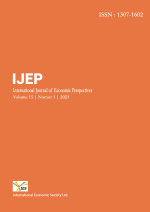Study on Mental Health Improvements
Abstract
Generally, physical fitness portrays a ton of credits relating to how well one performs physical activity. Participating in sport and physical activities, including physical fitness works out, expects a basic occupation in propelling health and wellness among youngsters and teens. Not solely does such development assist with working on the physical fitness and health of youngsters and youth, yet likewise it is a vital strategy for stemming youth robustness—a fundamental health need for our country. The aim of this study was to investigate the associations between health-related physical fitness and sociodemographic factors in students from a capital city of a Brazilian state. Methods. A cross-sectional study was conducted on 605 students aged 15 to 19 years. Sociodemographic data were collected, including gender, age, education level and family income, and correlated to physical fitness levels. Results. The percentages of students with unhealthy body composition, unhealthy skeletal muscle fitness and aerobic fitness levels were 23.8%, 34.4% and 30.5%, respectively. There was a trend for fewer male adolescents (OR: 0.65; IC95%: 0.42–0.98) to have unhealthy body composition. Students from lower socioeconomic families were less likely to have musculoskeletal unfitness (OR = 0.60; IC95%: 0.41–0.89). In relation to aerobic fitness, male students (OR = 3.86; IC95%: 2.67–5.58) and those aged 17–19 years (RO = 1.49; IC95%: 1.02–2.177) were more likely to be unfit. Conclusions. It is important to encourage young people to take part in sports and physical activities at moderate to vigorous intensities in order to improve their body composition, aerobic capacity and physical fitness.
References
REFERENCES
] Bosquet L., Montpetit J., Arvisais D., Mujika I. (2007). Effects of tapering on performance: A meta-analysis. Medicine and Science in Sports and Exercise, 39(8), 1358-1365.
] Bottinelli, R., Pellegrino, M. A., Canepari, M., Rossi, R., Reggiani, C. (1999). Specific contributions of various muscle fibre types to human muscle performance: an in vitro study. Journal of electromyography and kinesiology: official journal of the International Society of Electrophysiological Kinesiology 9 (2), 87-95.
] Ozaki G.A.T., Koike T.E., Castoldi R.C., Garçon A.A.B., Kodama F.Y., Watanabe A.Y., et al. (2014). Efeitos da remobilização por meio de exercício físico sobre a densidade óssea de ratos adultos e idosos. Motricidade. 10(3):71–8.
] Paradisis G.P., Tziortzis E., Zacharogiannis A., Smirniotou A., Karatzanos L. (2005). Correlation of the running-based anaerobic sprint test (RAST) and performance on the 100m,200m and 400m distance tests. Journal of Human Movement Studies, (49), 77-92.
] Pichot V., Roche F., Gaspoz J.M., Enjolras F., Antoniadis A. Minini P., Costes F., Busso T., Lacour J.R., Barthélémy J.C. (2000). Relation between heart rate variability and training load in middle-distance runners. Medicine and Science in Sports and Exercise, 32(10), 1729-1736.
] Carling C., Le Gall F., Dupont G. (2012). Analysis of repeated high-intensity running performance in professional soccer. J Sports Sci. 30:325-36.
] Castoldi R.C., Camargo R.C.T., Magalhães A.J.B., Ozaki G.A.T., Kodama F.Y., Oikawa S.M., et al. (2013). Concurrent training effect on muscle fibers in Wistar rats. Mot Rev Educ Física. 19(4):717–23.
] Castoldi R.C., Louzada M.J.Q., Oliveira B.R.S.M., Ozaki G.A.T., Koike T.E., Garcia T.A., Camargo R.C.T., Belangero W.D., Filho J.C.S.C. (2017). Effects of aerobic, anaerobic, and concurrent training on bone mineral density of rats, Motriz, Rio Claro, 23(1), p. 71-75.
] Chamari K., Moussa-Chamari I., Boussaidi L., Hachana Y., Kaouech F., Wisloff U. (2005). Appropriate interpretation of aerobic capacity: Allometric scaling in adult and young soccer players. British Journal of Sports Medicine, 39(2), 97-101.
] Rodas G., Ventura J.L., Cadefau J.A., Cussó R., Parra J. (2000). A short training programme for the rapid improvement of both aerobic and anaerobic metabolism. European journal of applied physiology, 82(5): p. 480-486.
] Ronnestad B.R., Kvamme N.H., Sunde A., Raastad T. (2008). Short-term effects of strength and plyometric training on sprint and jump performance in professional soccer players. Journal of Strength and Conditioning Research, 22(3), 773-780.
] Sale D.G., Jacobs I., MacDougall J.D., Garner S. (1990b). Comparison of two regimens of concurrent strength and endurance training. Med Sci Sports Exerc. 22(3):348-56.
Published
How to Cite
Issue
Section
Allows users to: distribute and copy the article; create extracts, abstracts, and other revised versions, adaptations or derivative works of or from an article (such as a translation); include in a collective work (such as an anthology); and text or data mine the article. These uses are permitted even for commercial purposes, provided the user: gives appropriate credit to the author(s) (with a link to the formal publication through the relevant URL ID); includes a link to the license; indicates if changes were made; and does not represent the author(s) as endorsing the adaptation of the article or modify the article in such a way as to damage the authors' honor or reputation. CC BY







